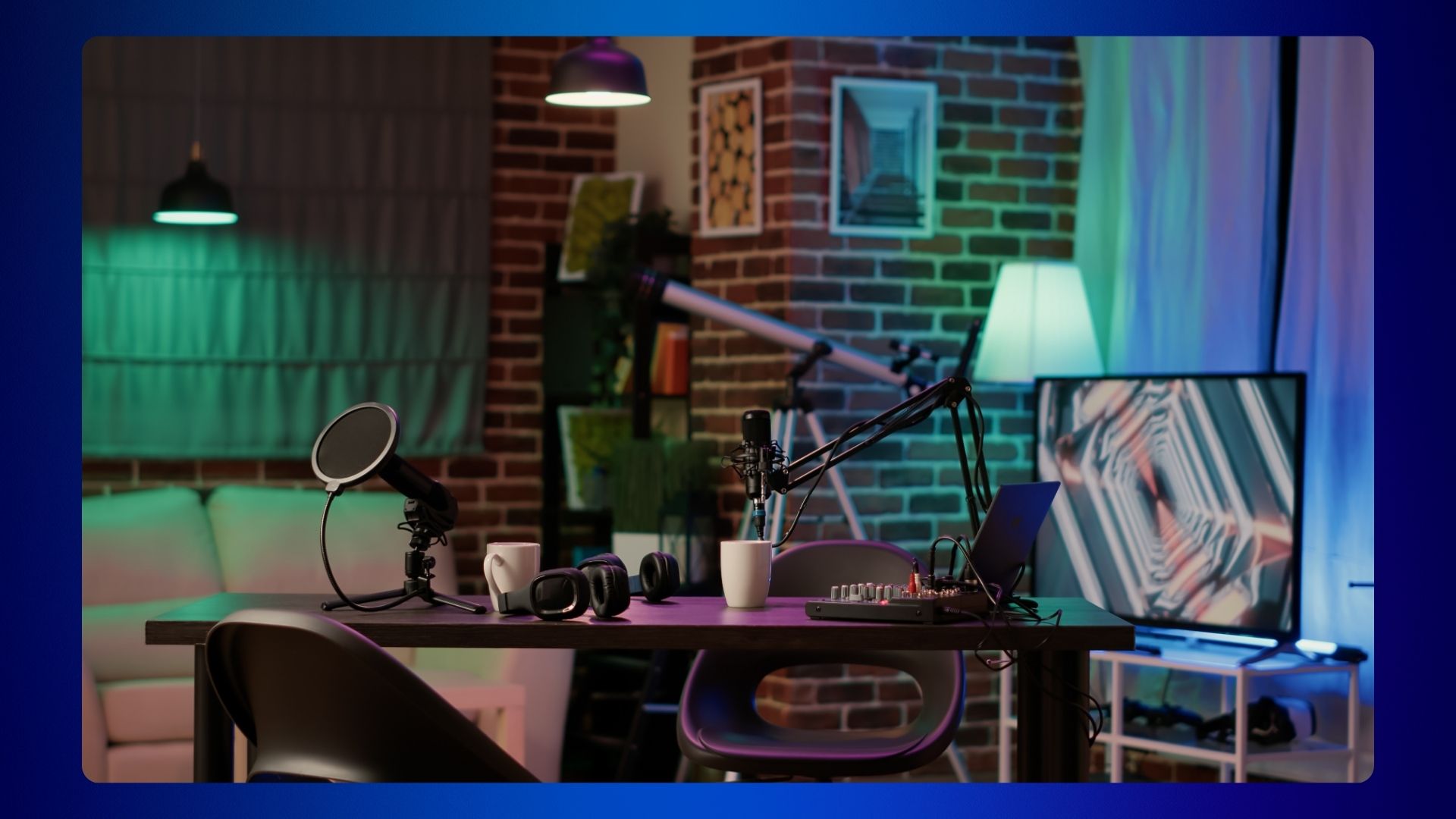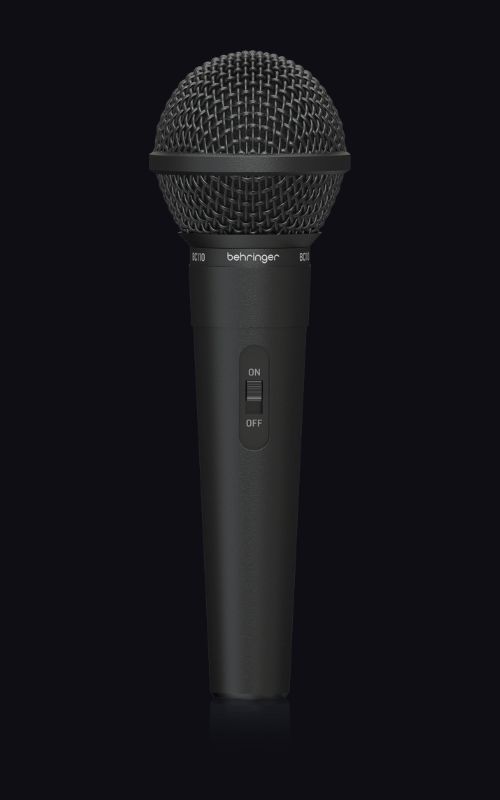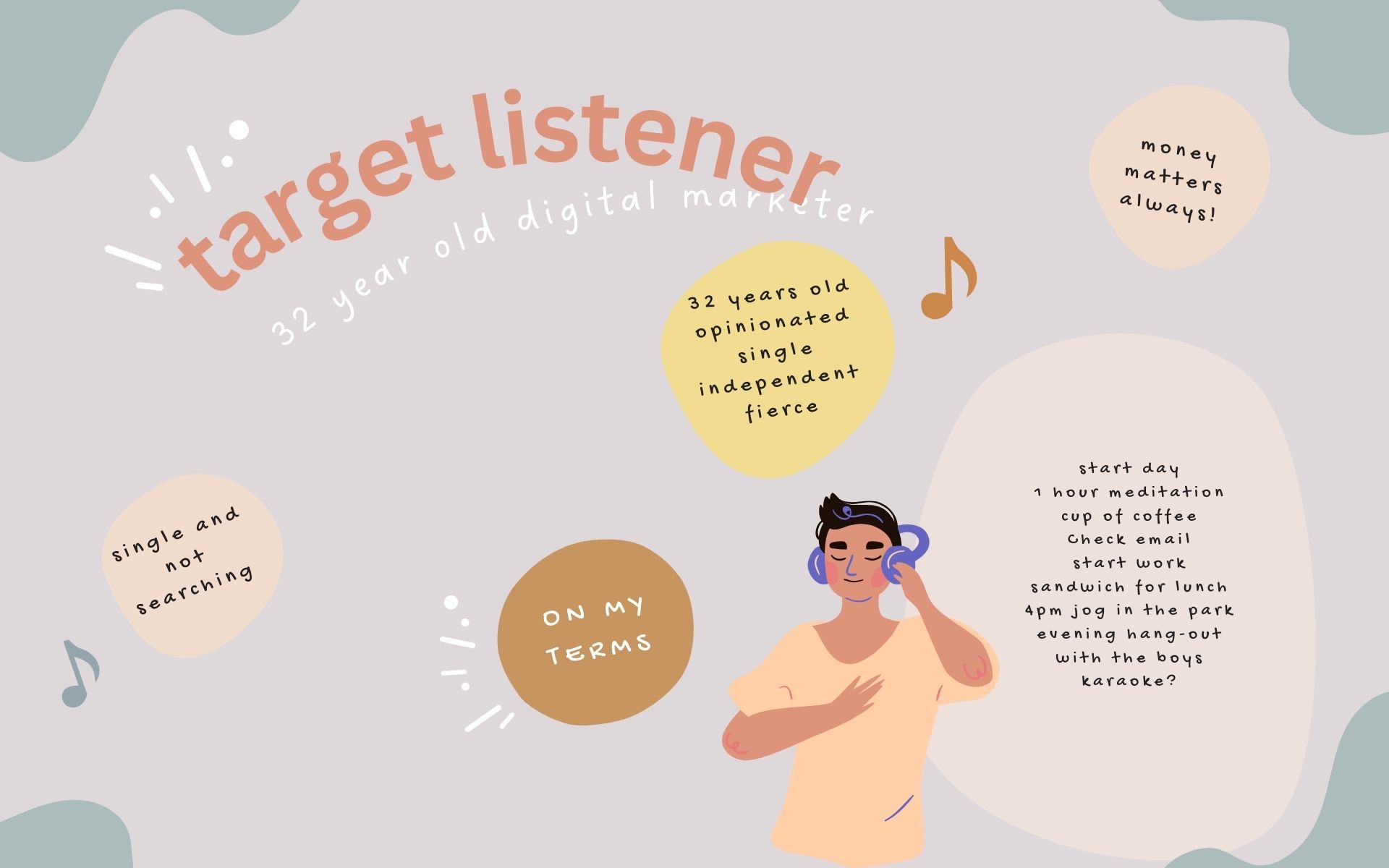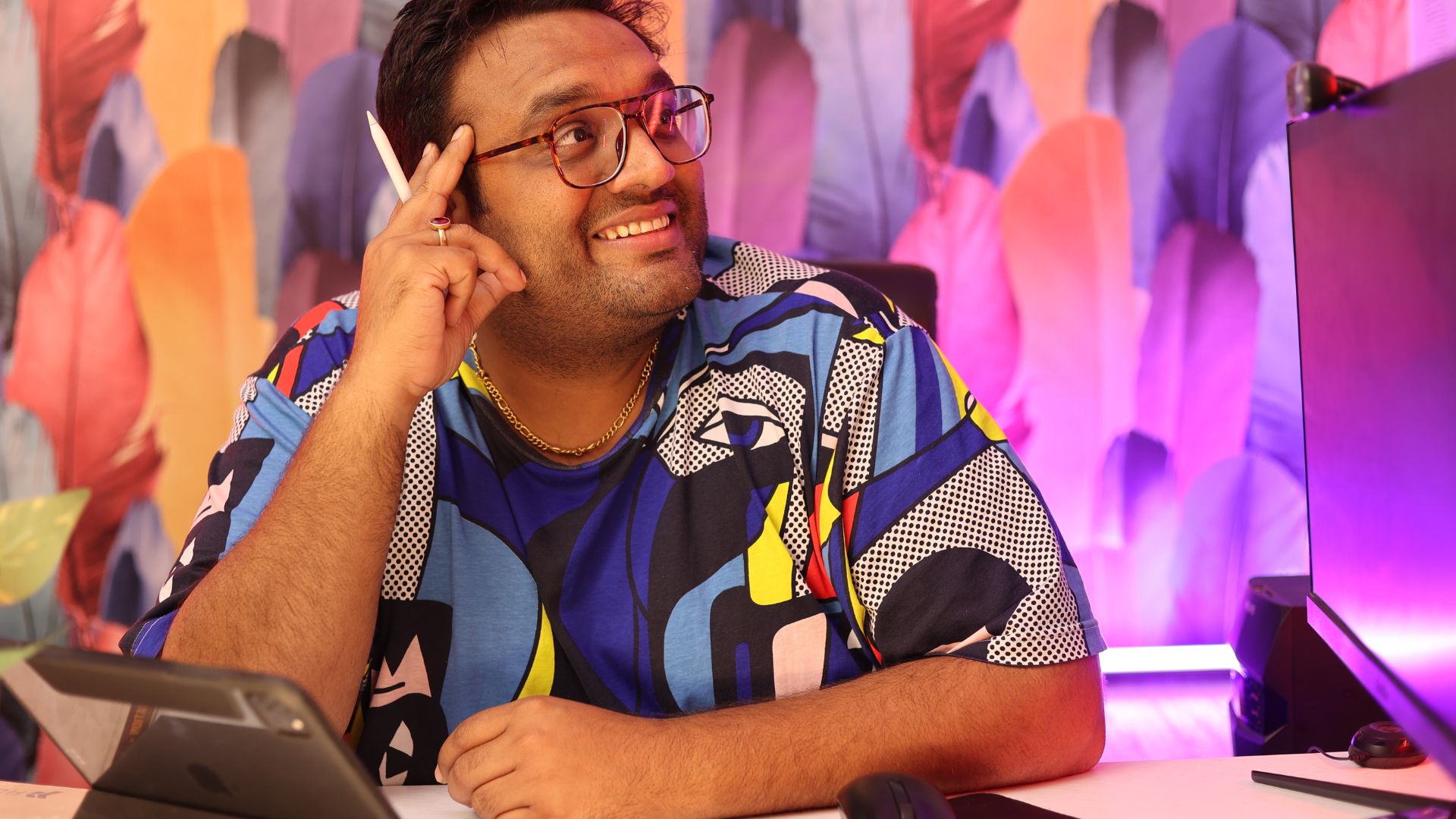Podcasting FAQs: Your Top 21 Questions Answered
Although podcasts have been around for a long time, it's amazing how quickly things can change on the technical side.
Podcasting Can Seem Confusing
Podcasting can get pretty confusing.
For example what is a video podcast and how is that different from a traditional podcast?
On top of that, should you focus on a video podcast or a traditional podcast?
In this article, I'm going to answer 21 of the most frequently asked questions about podcasting to give you clarity about this beautiful craft.
Podcasting FAQs: Here's What To Know
1.What Is A Podcast?
A podcast is a digital audio recording that is available on the internet for anyone to listen to.
The good thing about a podcast is that it is available any time, any day, any month. And in most cases, it is downloadable.
This gives it a stunning competitive edge over broadcast radio. With broadcast radio, the content expires every 60 seconds. If you miss it, it’s gone! Not so with a podcast. You can record a podcast today and someone 5 years from now will chance upon it and be influenced by it. In other words, a podcast is not just a recording. It’s a powerful asset. Incredible!
Think of podcasts like on-demand talk radio shows. You can subscribe to a show, download an episode to your smartphone or computer, and listen whenever you want. There are over 2 million podcasts online, covering just about any topic you can imagine: From sports to comedy to spirituality to business. Podcasts also come in a variety of formats, including solo, group, interview, live recordings and more.
2. What Is A Video Podcast
A Video podcast is a video recording of a podcast that is uploaded to video platforms like YouTube and Instagram. The audio retains the traditional format structure of a podcast while the video helps to reach a broader audience that may not have been reached through audio distribution.
Alternatively, the video can be used to promote the audio podcast or serve as the video show content itself. Podcasts are an “audio first” medium, meaning that the quality of the audio is of utmost importance.
3. Should I Do A Video or Audio Podcast?
Well, this depends on what you're most comfortable with.
Are you comfortable behind a video camera?
The way I like to think of it is by asking the question, "Do you want to be seen, or heard?"
Answering this question helps you determine which podcast format to choose.
Video sells
One of the reasons why a large number of content creators are opting for a video podcast is because it's much harder to grow an audience with an audio-only podcast. Video has impressive metrics that help you grow an audience faster. Video's reach is much wider and more people enjoy watching video. Video has the upper advantage of combining images with audio so it's more entertaining. With YouTube, for example, you can instantly see viewership numbers. You can view and respond to comments on your content. That makes video the faster organic way to grow your reach and influence.
It's not that easy with an audio podcast. Podcast tracking metrics haven't been sufficiently developed to enable you to identify who's listening to your podcast. So you can publish a podcast and still not know who's listening or where they come from.
Sadly, it then means that only the top 1% of podcasters get all the attention.
These are the likes of The Joe Rogan Experience, Ted Talks, The Daily, and more.
My main challenge with video podcasts is the terminology. I don't see the difference between a video podcast and a video. It's the same thing - a video.
However, although I'm a traditional audio only buff, I have to admit that video podcasts are here to stay.
So, I suggest you should also jump on the bandwagon and consider a video podcast as a way to amplify your organic reach and grow an audience.
Producing a video podcast comes with its own learning curve.
Audio is straightforward - you record, edit and publish.
Video is a little more complex.
You need to learn video editing software, lighting and camera angles, set design and technique. It's the look that matters. With an audio podcast, its your voice that matters.
If you opt for an audio podcast, you can still grow your audience, but it will take time. In my experience, it takes at least one year. I don't see the audio-only format dying any time soon and as long as you know how to market and promote your podcast, you can still be successful.
4. What Is An RSS Feed
RSS stands for Really Simple Syndication. It refers to files easily read by a computer called XML files that automatically update information.
An RSS Feed is to podcasts what blood is to a human body. It’s the DNA - the actual encryption of a digital file - in this case an audio digital file.
Think of it as a newsfeed, or your Instagram feed. As posts are published, they become available for you to see. When a podcast episode is published, that information is added to the RSS feed, and the RSS feed is responsible for sharing and distributing that content to certain platforms.
Your RSS feed contains your show title, information you’ve added about your show, episodes details. It has everything that is necessary to add your podcast to directories. It all gets passed to directories, like Apple and Spotify. When you add and publish a new episode, your RSS feed updates to reflect that information, and pushes it to directories you’ve syndicated your podcast to.
RSS feeds are either created by podcast hosts, or you can create one on your own.
This content is distributed in real time, so that the top results on the RSS feed are always the latest published content for a website.
An RSS Feed is to podcasts what blood is to a human body. It’s the DNA - the actual encryption of a digital file - in this case an audio digital file.
- David Makuyu
Most podcasters use a podcast hosting provider to create their RSS feed.
I strongly recommend using your own website to generate your RSS feed. This makes you the sole owner of your feed. Any other RSS feed created on an external platform is the property of that platform, meaning that you will need to continue using that platform for the remainder of your podcasting journey to publish your podcast. You can't just up and leave. Say you decide to stop paying a recurring fee to the platform, you lose access to your podcasting feed. You’d need to start again.
So, in my view, invest in your own website and use that to generate your RSS feed.
5. How Does An RSS Feed Work?
These are the basic steps to how an RSS Feed works with podcasts:
After recording and editing an episode, you need to upload and store the mp3 file to a podcast hosting provider. The service acts as a warehouse, holding all of your audio files and podcast information in one secure space.
In order to access what’s inside this warehouse, the podcast host generates an RSS feed link. This link then becomes the middleman between you and your audience, establishing the pathway for your episodes to leave the warehouse and be featured on podcast directories.
To create that pathway, you submit the RSS feed link to each directory when you set up an account for your podcast.
When someone plays your episode within Spotify, the RSS feed asks your podcast host provider for the correct audio file and seamlessly delivers the content back to Spotify.
As you upload new episodes to your podcast host provider, the RSS feed automatically gives the information to each directory so your audience can access the latest content.
A great perk of RSS feeds is the connection to each podcast directory only needs to be set up once. Once the podcast hosting provider and directory are linked, a podcast’s listing will update automatically.
6. How Long Should My Podcast Episode Be?
There’s no general standard.
What applies to one podcast may not necessarily apply to another. Joe Rogan can comfortably stage a 1 hour podcast. But he’s developed this ability over years.
I’ll say make it as short as possible. Start off with a 5 minute podcast... even a 1-minute episode! You want to create thirst and desire for your next episode.
But here’s a good rule of thumb to use as a measure.
KISS
Keep-it-short-and-simple.
Make it as short as possible to maximize retention and memorability. Your goal is not saturation, but retention. You want your listener effortlessly reciting your last 5 episodes as if they listened to them yesterday.
7. Why Are Podcasts Grouped As ‘Seasons’
Just like in television, a podcast season is a way to separate your content into smaller self-contained batches that you release over time.
How you approach the content of each season is entirely up to you, as long as it all makes sense under the umbrella concept of your show.
Each season could focus on a different story or topic so you’re starting fresh with each batch of episodes.
Or you might have the same style of content across every episode e.g. an interview series, but you release your show in batches with a break in between.
This hails from TV where shows are grouped as ‘Series.’
The main logic for this is related content, although that is no longer a determining factor.
A podcast series simply helps with defining the natural progression and chronology of the podcasts you’re producing. In the case of a podcast, it helps organize your respective podcast shows in a natural grouping that is organized and progressive. A season can focus on one type of content. It also allows easy promotion.
8. How Many Episodes Should My Podcast Be?
There is no rule of thumb on this. It can be 2, 10, 15 or whatever. It depends on how exhaustive your content is and how you structure it. Your content determines the number of episodes.
9. What Audio Gear Do I Need?
You don’t need to break the bank on this one. All you need are 6 essential audio gear items:
- Closed-back, Over-ear headphones,
- An audio interface,
- Dynamic Mic,
- Mic Stand/Boom Arm,
- DAW (Digital audio workstation)
- A laptop/computer.
You can afford all this just under $400.
I also have options for whatever price range you’re at: From under $150 right up to the pricey $1,000 mark.
10. Do I Need A Soundproofed Studio To Record My Podcast?
The beauty of podcasting is that it’s designed to be the exact opposite of a broadcast radio environment.
Whereas you needed to go to a physical radio studio in a secure fortified building, soundproofed with double doors and 15,000/- radio desks, now you can comfortably broadcast live from your living room. In fact, most people simply mount up a mic stand/boom arm near their favorite chair and hit record.
Your modern contemporary podcast studio is a lounge with a poof set, two arm chairs, some potted plants and a carpet.
 A podcast studio is the rebel cousin to your professional radio studio - an environment where you record your podcast in the comfort of your living room, bedroom, patio area. As long as your environment is sound treated, with a lot of material that can absorb the sound bouncing off hard surfaces, you’re good to go.
A podcast studio is the rebel cousin to your professional radio studio - an environment where you record your podcast in the comfort of your living room, bedroom, patio area. As long as your environment is sound treated, with a lot of material that can absorb the sound bouncing off hard surfaces, you’re good to go.
10. Can I Record My Podcast Anywhere?
Recording a podcast doesn’t have to be constrained to a soundproofed studio.
Your podcast set-up is so flexible, you can comfortably record from any location. Your mic, laptop are easily transportable to any location. So all you have to do is make sure your environment is relatively sound-treated to minimize background noise.
so flexible, you can comfortably record from any location. Your mic, laptop are easily transportable to any location. So all you have to do is make sure your environment is relatively sound-treated to minimize background noise.
Additionally, a dynamic microphone is a handy tool that enables you record anywhere because it rejects most sound from an off-axis angle. This means it captures the audio directly in front of the mic capsule. Say you want to record in a coffee shop, you can still ensure good sound quality. This is why I emphasize on using dynamic mics.
A Zoom recorder like the Zoom Podtrack P4 podcast recorder is another nifty tool that allows you record anywhere.
Most Zoom recorders can fit in the palm of your hand enabling you to walk around, quickly set it up and press record. Record it in your favorite coffee shop, restaurant, hotel, in the field. I love the Zoom range of devices because they were specifically built and designed with podcasters in mind.
The Zoom R4 Multitrak is one of my favorite recorders.
11. How Long Should My Podcast Be?
I recommend making your podcast as short as possible. Your goal is message retention, not saturation.
For starters, begin with a 5 minute episode and let your listeners determine whether you should scale it up or not. If you release a 5-minute episode and your listeners don't complain, be very worried. If they do, get excited. They want more. Add another 5 minutes. And continue until you reach a natural threshold.
12. What Should I Talk About?
What are you passionate about? Focus on that.
Talk about your experiences. You know them better than anyone else.
If you're still unsure, try the tried and tested approach - the Q-N-A format. It never fails!
13. Should I Release My Podcast Daily, Weekly, Monthly or Bi-Monthly?
The true answer to this question depends on an accurate understanding of your target listener’s lifestyle habits.
If your listener mostly listens to podcasts over the weekend, then publish your podcast then. So your schedule then becomes the weekend.
Beyond this, it’s really a matter of how much is too much.
Your main focus is establishing top of mind awareness.
In your case, if that is possible with a daily, weekly or monthly episode, then do that.
In a world where attention is fleeting, define a schedule that you can keep up with.
But again, your focus shouldn’t be too much on when to release an episode but how to market every podcast episode as much as possible.
The 80:20 rule applies. Focus 80% of your effort on marketing and 20% of producing content.
This is the greatest thing about podcasting. You can promote podcasts you published last year and still capture a new audience.
14. Do I Have What It Takes To Be A Podcaster?
Here’s 7 insights that will help you answer that question.
#1: Do you have a story to tell?
#2: Do you have a message that will contribute value to whoever listens?
#3: Are you in love with the audio format?
#4: Do you find it hard to go a day without listening to podcasts or music?
#5: Is audio your most preferred way of consuming and retaining information?
#6: Do you learn things faster when you listen or read?
#7: Have you ever been complimented on a public performance of some sort like public speaking, poetry, acting or singing?
If your answer to more than 5 of these questions is “YES”, then chances
are you have what it takes to be an expert podcaster.
15. How Do I Grow My Audience?
Develop your listener profile.

If you need more help with this, contact me and we'll design one together.
Your listener persona helps you understand your listener’s lifestyle dynamics.
Who are they?
How old are they?
Where do they live?
What are they interested in?
What do they talk about?
What do they get up to over weekends?
What kind of books and music do they like?
What kind of content are they interested in?
What do recreational activities do they enjoy?
What kind of work do they do?
What social media platform do they hang out on?
Once you have these metrics, find out how to make yourself very visible to that person.
For some of you, it could mean joining the local Toastmasters or Ted Talks chapter in your neighborhood. For others, it could be Church, forums, networking parties, etc.
Then focus on aggressively promoting yourself on those spaces.
16. My Audience Isn't Growing... What Could The Problem Be?
It takes time to grow an audience.
In most cases, it will take you at least 1 year to grow a core audience.
It takes a year because when you first start out, you will attract your friends, family and many of your social media followers. After a while, they will consider whether your content is relevant or entertaining enough to warrant their time and attention. Priorities will begin to get in the way. This is the time when some listeners begin to drop off while others will stick around. Some listeners won't be too frequent. A core group will eventually form who will listen to every episode you put out.
This is your core audience - a loyal band of die-hard enthusiasts who can't get enough of your content. This core audience are the most likely to promote your podcast to their networks.
I've written an in-depth blog post on this where I cover the 9 most likely reasons why your audience isn't growing and how to rectify it.
17. How Can I Promote My Podcast?
Set up a website that lists all your podcasts.
Drive all listeners to your website and - this is really important - convert them into subscribers.
I’m going to say it again. Convert them into subscribers.
Your subscriber list is the most important thing you can do because it helps you control the marketing and promotion process.
Your most important job is to convert all website visitors into subscribers. - David Makuyu
As long as you have that email, you can promote every podcast episode you ever produce, even up to 10 years later.
Contrast this with social media marketing. The challenge with platforms like Instagram or Facebook is that you're not really in control of your account. They could shut you down at any time. Or you could get hacked and lose all your followers. And even after you've grown your follower count, you're still not sure they will listen to your podcast.
At the end of the day, Apple Podcasts or Google Podcasts are just listing platforms. It’s not their job to promote you. That’s YOUR JOB. Your website is your most effective platform to do that. Use social media and YouTube to point people to your website.
18. How Can I Monetize My Podcast?
The trick with efficient podcast monetization is to monetize offline not online.
In other words, a podcast is an awareness tool that you can use to develop offline revenue avenues like speaking engagements, online courses, product and services, emceeing/facilitation opportunities. Don’t be too bothered about ad placement within your podcast because there are metrics that you can’t control or guarantee to your sponsor like number of actual downloads or actual listeners.
That said, here are some ways you can monetize your podcast.
- Ads: You can sell ads or get brands to sponsor specific segments on your show. Advertisers typically require a podcast to get at least 5,000 downloads per episode before they choose to place advertising. Less than 10% of podcasts achieve those numbers.
- Marketing: You can market a product or service. For example, a law firm might start a podcast about legal issues as a way to attract new clients.
- Subscriptions: You may create additional content available to your listeners for a price. For example, you may offer ad-free versions of your regular episodes, access to older episodes, or extra episodes that are only available to subscribers through a gateway.
- Events: Some podcasters go on tour and record their shows in front of a live audience. That can be your strategy too. They can sell tickets to these events to generate revenue.
- Merchandise: Some podcasters sell t-shirts, mugs, stickers, or other items related to their shows.
- Listener Donations: You could ask your listeners to support them directly by making donations.
- Sell affiliate products/services:
19. Can I Record A Podcast Using My Phone?
I don't recommend this approach.
Your phone doesn't have effective pre-amps to give you proper audio recording levels. You’re also limited to using USB mics that plug into your smartphone USB port which reduces a lot of audio quality.
You're best placed investing in good quality equipment that will command your listeners' attention.
20. Why Should I Include Show Notes With My Podcast?
Transcription is an important way of gaining visibility on the search engines. Considering search engines have not yet developed a proper way of indexing audio, you need to convert your audio to text so that certain keywords in your content will cause your podcast to rank higher in search results.
21. How Do You Keep A Podcast Interesting?
Be interesting
It goes without saying that you need to be interesting.
Here's a rule of thumb: If you're not enthusiastic about your content, don't expect anyone else to be.
Content delivery rocks!
Staying with content, your content delivery matters a big deal.
Storytelling is King
Consider a storytelling approach. Apply emotion, charisma, momentum to your narrative. Cause your listener to create images in their mind using your words. Storytelling is a time-tested way of maintaining people's attention. Hollywood is a multi-billion dollar industry riding on the back of storytelling. Think Shonda Rhimes, JK Rowling and even Barack Obama. All these gurus applied the technique of masterful storytelling to great effect.
Which format works best for you?
You could opt for an interview format to keep things interesting. The interplay between two or more voices helps keep things animated and interesting. This is one of the major reasons why most podcasters do an interview podcast. Just make sure your guest is a lively, bright personality because nothing switches off listeners more like a boring person.
Great Imaging is a sure bet!
If you opt for a solo podcast, I strongly recommend investing in a good podcast imaging pack that contains jingles, sweepers, background music, and stagers.
These pre-produced elements add a sense of movement to your episode prompting excitement, spontaneity and color to your delivery. And since these imaging elements feature different voices as well as music, not only is it entertaining, they act as 'interrupts' that hold a listener's attention for longer.
If you need a great imaging pack, contact me.
Now, That Your Podcasting FAQs Have Been Answered...
I'm hoping you're in a better place to succeed.
Podcasting gives you a voice to express your story in your unique style.
If you have more questions, contact me via LinkedIn. Alternatively, shoot me an email.
I cover more podcasting insights in my newsletter, Creator Unlimited. I also update content creators on the latest insights, trends and technologies in content creation, so go on and become a subscriber. Here's that link again.
Happy podcasting!!




Leave a Comment: